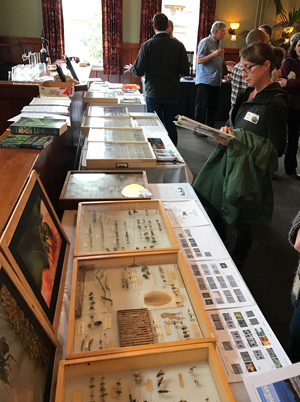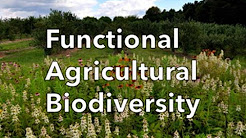Embracing Functional Agricultural Biodiversity to Tap into Nature's Services
Knowing that bringing natural diversity to a farm can help boost production and benefit the bottom line is just the beginning. The next level is knowing which plants to incorporate, insects to encourage and habitat to install.
 Reaching that next level – teaching farmers specific tactics for bringing functional agricultural biodiversity to their farms – was the goal of a one-day conference organized by the Functional Agricultural Biodiversity Work Group in March.
Reaching that next level – teaching farmers specific tactics for bringing functional agricultural biodiversity to their farms – was the goal of a one-day conference organized by the Functional Agricultural Biodiversity Work Group in March.
The day’s program was drawn directly from a survey sent to growers and conservationists across Oregon, Washington, California and Idaho who have been involved with the work group, said Gwendolyn Ellen from the Farmscaping for Beneficials Program at Oregon State University.
"They wanted to know the specifics about habitat installation on farms and what native plants might work in their specific agricultural ecosystem,” she said, “And they want to know if what they’re doing works.”
Laurie Mooney was one of the growers who attended. Mooney is a landscape designer for Pacific Foods Company, which has 20 different organic farm sites around Oregon. A key role of her job is ensure that each site has something blooming all the time.
“Those year-round blooms are helping our pollinators which in turn are helping our crops and helping our animals and keeping the agro-ecosystem on every site we have healthy,” she said.
For Mooney, one takeaway from the conference was using landscape cardboard in preparation for planting a hedgerow of native plants.
“A lot of times hedgerows may look great the first year but it’s not sustaining itself because weeds might take over,” she said. “I’m definitely planning on trying laying cardboard and putting mulch over it. I’m planning on doing that in May, letting it sit through the summer and doing my hedgerow planting in the fall and winter.”
One of the ecosystem services on-farm biodiversity can provide is pest management, explained Mace Vaughn, the pollinator conservation program co-director at the Xerces Society and a speaker at the conference.
“When you grow a single species over a large number of acres, you’re going to have pests come in that do really well there,” he said. “So if we can create habitat that brings in predators or parasites that attack those crop pests that really helps, in all cropping systems.”
Speakers at the conference also focused on plant selection and the best time to plant hedgerows and other habitat and ways to encourage beneficial insects for pollination and pest management. A key concept throughout the day was appreciating the complexity of interactions going on in an agro-ecosystem, looking for ways to achieve multiple benefits from new habitat plants or conservation decisions.
Christmas-tree farmer Terry Muilenburg of Green Valley Farms of Oregon has been planting cover crops between his tree rows for 30 years to prevent soil erosion and attract beneficial insects.
“I want to do a better job of what I’ve been trying to do,” he said. “I want to know more about native plants. I’ve always planted grasses because they’re easy to manage, and every five rows or so I’ll plant something like white clover. But maybe there are some other things I could be doing, and that’s why I’m here.”
A number of guides and resources are available on the Xerces Society website at xerces.org.
See a chart on pests and beneficial insects
 Launch video
Launch video